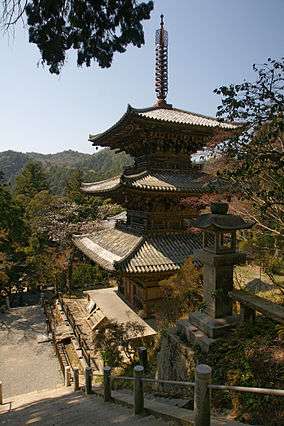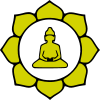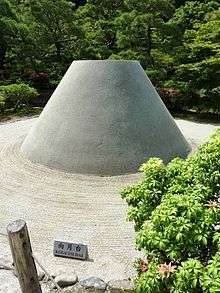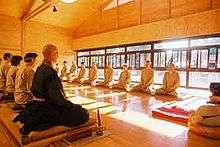Japanese Zen
| Japanese Zen | |||||||||||
| Chinese name | |||||||||||
|---|---|---|---|---|---|---|---|---|---|---|---|
| Simplified Chinese | 禅 | ||||||||||
| Traditional Chinese | 禪 | ||||||||||
| |||||||||||
| Vietnamese name | |||||||||||
| Vietnamese | Thiền | ||||||||||
| Korean name | |||||||||||
| Hangul | 선 | ||||||||||
| Hanja | 禪 | ||||||||||
| |||||||||||
| Japanese name | |||||||||||
| Kanji | 禅 | ||||||||||
| |||||||||||
| Sanskrit name | |||||||||||
| Sanskrit | ध्यान ( dhyāna ) | ||||||||||
| Part of a series on |
| Zen Buddhism |
|---|
 |
|
Persons Chán in China
Zen in Japan Seon in Korea Zen in the USA Category: Zen Buddhists |
|
Awakening |
|
Practice |
|
Related schools |
| Part of a series on |
| Buddhism in Japan |
|---|
 |
| Part of a series on |
| Mahāyāna Buddhism |
|---|
 |
|
Teachings |
|
Mahāyāna schools |
|
|
| Part of a series on |
| Buddhism |
|---|
 |
|
- See also Zen for an overview of Zen, Chinese Chán for the Chinese origins of Chán, and Sōtō, Rinzai and Ōbaku for the three main schools of Zen in Japan
Zen is the Japanese variant of Chán, a school of Mahayana Buddhism which strongly emphasizes dhyana concentration-meditation. This gives insight into one's true nature, or the emptiness of inherent existence, which opens the way to a liberated way of living.
History
Chinese origins

According to tradition, Zen originated in India, when the Buddha held up a flower and Kasyappa smiled. With this smile he showed that he had understood the wordless essence of the dharma. This way the dharma was transmitted to Kasyappa, the second patriarch of Zen.[1]
Buddhism was introduced to China in the first century CE. According to tradition Chán was introduced around 500 CE by Bodhidharma, an Indian monk teaching dhyana. He was the 28th Indian patriarch of Zen, and the first Chinese patriarch.[1]
Kamakura (1185-1333)
Buddhism was introduced in Japan in the 8th century CE during the Nara period (710-794) and the Heian period (794–1185). Zen was not introduced as a separate school in Japan until the 12th century during the Kamakura period (1185–1333), when Nōnin established the Daruma-school. In 1189 Nōnin[2] sent two students to China, to meet with Cho-an Te-kuang (1121–1203), and ask for the recognition of Nōnin as a Zen-master. This recognition was granted.[3]
In 1168 Myōan Eisai traveled to China, whereafter he studied Tendai for twenty years.[4] In 1187 he went to China again, and returned to establish a Linji lineage, which is known in Japan as Rinzai.[5] Decades later, Nanpo Shōmyō (南浦紹明) (1235–1308) also studied Linji teachings in China before founding the Japanese Otokan lineage, the most influential branch of Rinzai.
In 1215, Dōgen, a younger contemporary of Eisai's, journeyed to China himself, where he became a disciple of the Caodong master Tiantong Rujing. After his return, Dōgen established the Sōtō school, the Japanese branch of Caodong.[5]
Zen fitted the way of life of the samurai: confronting death without fear, and acting in a spontaneous and intuitive way.[5]
During this period the Gozan system, or the Five Mountains and Ten Temples was established, which institutionalized an influential part of the Rinzai school. It consisted of the five most famous Zen temples of Kyoto: Kencho-ji, Engaku-ji, Jufuku-ji, Jomyo-ji and Jochi-ji.[6]
Muromachi (or Ashikaga) (1336-1573)

During the Muromachi period the Rinzai school was the most successful of the schools, since it was favoured by the Shogun.
Gozan-system
In the beginning of the Muromachi period the Gozan system was fully worked out. The final version contained five temples of both Kyoto and Kamakura. A second tier of the system consisted of Ten Temples. This system was extended throughout Japan, effectively giving control to the central government, which administered this system.[7] The monks, often well educated and skilled, were employed by the shogun for the governing of state affairs.[8]
| Gozan system | ||
| Kyoto | Kamakura | |
|---|---|---|
| First Rank | Tenryū-ji | Kenchō-ji |
| Second Rank | Shōkoku-ji | Engaku-ji |
| Third Rank | Kennin-ji | Jufuku-ji |
| Fourth Rank | Tōfuku-ji | Jōchi-ji |
| Fifth Rank | Manju-ji | Jōmyō-ji |
Rinka-monasteries
Not all Rinzai Zen organisations were under such strict state control. The Rinka monasteries, which were primarily located in rural areas rather than cities, had a greater degree of independence.[9] The O-to-kan lineage, that centered on Daitoku-ji, also had a greater degree of freedom. It was founded by Nampo Jomyo, Shuho Myocho, and Kanzan Egen.[10] A well-known teacher from Daytoku-ji was Ikkyū.[5]
Another Rinka lineage was the Hotto lineage, of which Bassui Tokushō is the best-known teacher.[11]
Soto
Soto too spread out over Japan. Gasan adopted the Five Ranks of Tung-shan as a fit vehicle to explain the Mahayana teachings.[12]
Azuchi-Momoyama(1573-1600) and Edo (or Tokugawa)(1600-1868)

After a period of war Japan was re-united in the Azuchi–Momoyama period. This decreased the power of Buddhism, which had become a strong political and military force in Japan. Neo-Confucianism gained influence at the expense of Buddhism, which came under strict state control. Japan closed the gates to the rest of the world. The only traders to be allowed were Dutchmen admitted to the island of Dejima.[5] New doctrines and methods were not to be introduced, nor were new temples and schools. The only exception was the Ōbaku lineage, which was introduced in the 17th century during the Edo period by Ingen, a Chinese monk. Ingen had been a member of the Linji school, the Chinese equivalent of Rinzai, which had developed separately from the Japanese branch for hundreds of years. Thus, when Ingen journeyed to Japan following the fall of the Ming Dynasty to the Manchus, his teachings were seen as a separate school. The Ōbaku school was named after Mount Ōbaku (Ch. 黄檗山; Huángbò Shān), which had been Ingen's home in China.
Well-known Zen masters from this period are Bankei, Basho and Hakuin.[5] Bankei Yōtaku (盤珪永琢?, 1622–1693) became a classic example of a man driven by the "great doubt". Matsuo Bashō (松尾 芭蕉?, 1644 – November 28, 1694) became a great Zen poet. In the 18th century Hakuin Ekaku (白隠 慧鶴?, 1686–1768) revived the Rinzai school. His influence was so immense that almost all contemporary Rinzai lineages are traced back to him.
Meiji Restoration (1868−1912) and Imperial expansionism (1912−1945)
During the Meiji period (1868–1912), after a coup in 1868, Japan abandoned its feudal system and opened up to Western modernism. Shinto became the state religion, and Buddhism was coerced to adapt to the new regime. Within the Buddhist establishment the Western world was seen as a threat, but also as a challenge to stand up to.[13][14]
Shinto became the official religion, at the expense of Buddhism. Buddhist institutions had a simple choice: adapt or perish. Rinzai and Soto Zen chose to adapt, trying to modernize Zen in accord with Western insights, while simultaneously maintaining a Japanese identity. This Japanese identity was being articulated in the Nihonjinron-philosophy, the Japanese uniqueness-theory. A broad range of subjects was taken as typical of Japanese culture. D.T. Suzuki contributed to the Nihonjinron-philosophy by taking Zen as the distinctive token of Asian spirituality, showing its unique character in the Japanese culture[15]
This resulted in support for the war activities of the Japanese imperial system by the Japanese Zen establishment — including the Sōtō sect, the major branches of Rinzai, and several renowned teachers. According to Sharf,
They became willing accomplices in the promulgation of the kokutai (national polity) ideology - the attempt to render Japan a culturally homogeneous and spiritually evolved nation politically unified under the divine rule of the emperor.[15]
War endeavours against Russia, China and finally during the Pacific War were supported by the Zen establishment.[14][16]
A notable work on this subject was Zen at War (1998) by Brian Victoria,[14] an American-born Sōtō priest. One of his assertions was that some Zen masters known for their post-war internationalism and promotion of "world peace" were open nationalists in the inter-war years.[web 1] Among them as an example Haku'un Yasutani, the founder of the Sanbo Kyodan School, even voiced anti-semitic and nationalistic opinions after World War II. Only after international protests in the 1990s, following the publication of Victoria's 'Zen at war', did the Sanbo Kyodan express apologies for this support[web 2] This involvement was not limited to the Zen schools, as all orthodox Japanese schools of Buddhism supported the militarist state. Victoria's particular claims about D.T. Suzuki's involvement in militarism have been much disputed by other scholars.
Present time (after 1945)
Interest in Zen grew in the West after World War II. Westerners such as Philip Kapleau and the Dutchman Janwillem van de Wetering went to Japan to study Zen.[17] Japanese teachers came to the West to share Zen practice and philosophy.[18]
Some contemporary Japanese Zen teachers, such as Daiun Harada and Shunryu Suzuki, have criticized Japanese Zen as being a formalized system of empty rituals in which very few Zen practitioners ever actually attained realization. They assert that almost all Japanese temples have become family businesses handed down from father to son, and the Zen priest's function has largely been reduced to officiating at funerals, a practice sarcastically referred to in Japan as sōshiki bukkyō (葬式仏教, funeral Buddhism). For example, the Sōtō school published statistics stating that 80 percent of laity visited temples only for reasons having to do with funerals and death.[19]
Teachings
Buddha-nature and Sunyata

Mahayana Buddhism teaches sunyata, emptiness, which is also emphasized by Zen. But another important doctrine is the Buddha-nature, the idea that all human beings have the possibility to awaken. All living creatures are supposed to have the Buddha-nature, but don't realize this as long as they are not awakened. The doctrine of an essential nature can easily lead to the idea that there is an unchanging essential nature or reality behind the changing world of appearances.[20]
The difference and reconciliation of these two doctrines is the central theme of the Lankavatara sutra.[20]
Kensho: seeing one's true nature
The primary goal of Rinzai Zen is kensho, seeing one's true nature, and mujodo no taigen, expression of this insight in daily life.[21]
Seeing one's true nature means seeing that there is no essential 'I' or 'self', that our true nature is empty.
Expression in daily life means that this is not only a contemplative insight, but that our lives are expressions of this selfless existence.[web 3]
Methods
Zen meditation is the essential method of Zen. In Rinzai Zen this is supplemented by kōan training.
Zen meditation

Zen emphasizes zazen: meditation as the means to awakening. There are various methods of meditation. In Buddhism two main approaches are used, vipassana (awareness training) and samatha (concentration of the mind). Zen Buddhism emphasizes samatha. The Japanese word 'Zen' is derived from the Chinese word 'Chán', which is derived from dhyana, concentration. The Japanese word 'zazen' means 'sitting meditation'. But Zen meditation ideally is not only concentration, but also awareness: being aware of the continuing changes in our consciousness, of all our sensations and our automatic reactions.
In alteration with zazen, there is walking meditation, Kinhin, in which one walks with full attention.
Kōans
To facilitate insight, a Zen teacher can assign a kōan. This is a short anecdote, which seems irrational, but contains subtle references to the Buddhist teachings.[22] An example of a kōan is Joshu's 'Mu':[23]
A monk asked: "Does a dog have buddha-nature?" Joshu responded: "Mu!"
Contemporary Zen organizations
The traditional schools of Zen in contemporary Japan are the Sōtō (曹洞), Rinzai (臨済), and Ōbaku (黃檗). Of these, Sōtō is the largest and Ōbaku the smallest. Besides these there are modern Zen organizations which have especially attracted Western lay followers, namely the Sanbo Kyodan and the FAS Society.
Sōtō
Sōtō emphasizes meditation and the inseparable nature of practice and insight. Its founder Dogen is still highly revered.
Rinzai
Rinzai emphasizes kōan study and kensho. The Rinzai organisation includes fifteen subschools based on temple affiliation. The best known of these main temples are Myoshin-ji, Nanzen-ji, Tenryū-ji, Daitoku-ji, and Tofuku-ji.
Obaku
Ōbaku is a small branch, which organizationally, is part of the Rinzai school.
Sanbo Kyodan

The Sanbo Kyodanis a small Japanese school, established by Hakuun Yasutani, which has been very influential in the West. Well-known teachers from this school are Philip Kapleau and Taizan Maezumi. Maezumi's influence stretches further through his dharma heirs, such as Joko Beck, Tetsugen Bernard Glassman, and especially Dennis Merzel, who has appointed more than a dozen dharma heirs.
FAS Society
The FAS Society is a non-sectarian organization, founded by Shin'ichi Hisamatsu. Its aim is to modernize Zen and adapt it to the modern world. In Europe it is influential through such teachers as Jeff Shore and Ton Lathouwers.
Zen in the Western world
Early influences
Although it is difficult to trace when the West first became aware of Zen as a distinct form of Buddhism, the visit of Soyen Shaku, a Japanese Zen monk, to Chicago during the World Parliament of Religions in 1893 is often pointed to as an event that enhanced its profile in the Western world. It was during the late 1950s and the early 1960s that the number of Westerners pursuing a serious interest in Zen, other than descendants of Asian immigrants, reached a significant level.
Eugen Herrigel's book Zen in the Art of Archery[24] describing his training in the Zen-influenced martial art of Kyūdō, inspired many of the Western world's early Zen practitioners. However, many scholars, such as Yamada Shoji, are quick to criticize this book.[25]
D.T. Suzuki
The single most influential person for the spread of Zen Buddhism was D. T. Suzuki.[13][15] A lay student of Zen, he became acquainted with Western culture at a young age. He wrote many books on Zen which became widely read in the Western world, but he has been criticised for giving a one-sided and overly romanticized vision of Zen.[13][15][26]
Reginald Horace Blyth (1898–1964) was an Englishman who went to Japan in 1940 to further his study of Zen. He was interned during World War II and started writing in prison. While imprisoned he met Robert Aitken, who was later to become a roshi in the Sanbo Kyodan lineage. Blyth was tutor to the Crown Prince after the war. His greatest work is the 5-volume "Zen and Zen Classics", published in the 1960s. Here he discusses Zen themes from a philosophical standpoint, often in conjunction with Christian elements in a comparative spirit. His essays include "God, Buddha, and Buddhahood" and "Zen, Sin, and Death".
Beat Zen
The British philosopher Alan Watts took a close interest in Zen Buddhism and wrote and lectured extensively on it during the 1950s. He understood Zen as a vehicle for a mystical transformation of consciousness, and also as a historical example of a non-Western, non-Christian way of life that had fostered both the practical and fine arts.
The Dharma Bums, a novel written by Jack Kerouac and published in 1959, gave its readers a look at how a fascination with Buddhism and Zen was being absorbed into the bohemian lifestyles of a small group of American youths, primarily on the West Coast. Beside the narrator, the main character in this novel was "Japhy Ryder", a thinly veiled depiction of Gary Snyder. The story was based on actual events taking place while Snyder prepared, in California, for the formal Zen studies that he would pursue in Japanese monasteries between 1956 and 1968.[27]
Christian Zen
Thomas Merton (1915–1968) was a Catholic Trappist monk and priest.[web 4] Like his friend, the late D.T. Suzuki, Merton believed that there must be a little of Zen in all authentic creative and spiritual experience. The dialogue between Merton and Suzuki[28] explores the many congruencies of Christian mysticism and Zen.[29][30]
.jpg)
Hugo Enomiya-Lassalle (1898–1990) was a Jesuit who became a missionary in Japan in 1929. In 1956 he started to study Zen with Harada Daiun Sogaku. He was the superior of Heinrich Dumoulin, the well-known author on the history of Zen. Enomiya-lassalle introduced Westerners to Zen meditation.
Robert Kennedy (roshi), a Catholic Jesuit priest, professor, psychotherapist and Zen roshi in the White Plum lineage has written a number of books about what he labels as the benefits of Zen practice to Christianity. He was ordained a Catholic priest in Japan in 1965, and studied with Yamada Koun in Japan in the 1970s. He was installed as a Zen teacher of the White Plum Asanga lineage in 1991 and was given the title 'Roshi' in 1997.
In 1989, the Vatican released a document which states some Catholic appreciation of the use of Zen in Christian prayer. According to the text none of the methods proposed by non-Christian religions should be rejected out of hand simply because they are not Christian:
On the contrary, one can take from them what is useful so long as the Christian concept of prayer, its logic and requirements are never obscured.[web 5]
Zen and the art of...
While Zen and the Art of Motorcycle Maintenance, by Robert M. Pirsig, was a 1974 bestseller, it in fact has little to do with Zen as a religious practice, nor with motorcycle maintenance for that matter. Rather it deals with the notion of the metaphysics of "quality" from the point of view of the main character. Pirsig was attending the Minnesota Zen Center at the time of writing the book. He has stated that, despite its title, the book "should in no way be associated with that great body of factual information relating to orthodox Zen Buddhist practice". Though it may not deal with orthodox Zen Buddhist practice, Pirsig's book in fact deals with many of the more subtle facets of Zen living and Zen mentality without drawing attention to any religion or religious organization.
A number of contemporary authors have explored the relationship between Zen and a number of other disciplines, including parenting, teaching, and leadership. This typically involves the use of Zen stories to explain leadership strategies.[31]
Art
In Europe, the Expressionist and Dada movements in art tend to have much in common thematically with the study of kōans and actual Zen. The early French surrealist René Daumal translated D.T. Suzuki as well as Sanskrit Buddhist texts.
Western Zen lineages derived from Japan
Over the last fifty years mainstream forms of Zen, led by teachers who trained in East Asia and their successors, have begun to take root in the West.
USA
Sanbo Kyodan
In North America, the Zen lineages derived from the Sanbo Kyodan school are the most numerous. The Sanbo Kyodan is a Japan-based reformist Zen group, founded in 1954 by Yasutani Hakuun, which has had a significant influence on Zen in the West. Sanbo Kyodan Zen is based primarily on the Soto tradition, but also incorporates Rinzai-style kōan practice. Yasutani's approach to Zen first became prominent in the English-speaking world through Philip Kapleau's book The Three Pillars of Zen (1965), which was one of the first books to introduce Western audiences to Zen as a practice rather than simply a philosophy. Among the Zen groups in North America, Hawaii, Europe, and New Zealand which derive from Sanbo Kyodan are those associated with Kapleau, Robert Aitken, and John Tarrant.
The most widespread are the lineages founded by Hakuyu Taizan Maezumi and the White Plum Asanga. Maezumi's successors include Susan Myoyu Andersen, John Daido Loori, Chozen Bays, Tetsugen Bernard Glassman, Nicolee Jikyo McMahon, Joan Hogetsu Hoeberichts, and Charlotte Joko Beck.
Soto
Soto has gained prominence via Shunryu Suzuki, who established the San Francisco Zen Center. In 1967 the Center established Tassajara, the first Zen Monastery in America, in the mountains near Big Sur.
The Katagiri lineage, founded by Dainin Katagiri, has a significant presence in the Midwest. Note that both Taizan Maezumi and Dainin Katagiri served as priests at Zenshuji Soto Mission in the 1960s.
Taisen Deshimaru, a student of Kodo Sawaki, was a Soto Zen priest from Japan who taught in France. The International Zen Association, which he founded, remains influential. The American Zen Association, headquartered at the New Orleans Zen Temple, is one of the North American organizations practicing in the Deshimaru tradition.
Soyu Matsuoka established the Long Beach Zen Buddhist Temple and Zen Center in 1971, where he resided until his death in 1998. The Temple was headquarters to Zen centers in Atlanta, Chicago, Los Angeles, Seattle, and Everett, Washington. Matsuoka created several dharma heirs, three of whom are still alive and leading Zen teachers within the lineage: Hogaku ShoZen McGuire, Zenkai Taiun Michael Elliston Sensei, and Kaiten John Dennis Govert.
Brad Warner is a Soto priest appointed by Gudo Wafu Nishijima. He is not a traditional Zen teacher, but is influential via his blogs on Zen.
Rinzai
Rinzai gained prominence in the West via D.T. Suzuki and the lineage of Soen Nakagawa and his student Eido Shimano. Soen Nakagawa had personal ties to Yamada Koun, the dharma heir of Hakuun Yasutani, who founded the Sanbo Kyodan.[32] They established Dai Bosatsu Zendo Kongo-ji in New York. In Europe there is Egely Monastery established by a Dharma Heir of Eido Shimano, Denko Mortensen.
Some of the more prominent Rinzai Zen centers in North America include Rinzai-ji founded by Kyozan Joshu Sasaki Roshi in California, Chozen-ji founded by Omori Sogen Roshi in Hawaii, Daiyuzenji founded by Dogen Hosokawa Roshi (a student of Omori Sogen Roshi) in Chicago, Illinois, and Chobo-Ji founded by Genki Takabayshi Roshi in Seattle, Washington.
United Kingdom
The lineage of Hakuyu Taizan Maezumi Roshi is represented in the UK by the White Plum Sangha UK.
Throssel Hole Buddhist Abbey was founded as a sister monastery to Shasta Abbey in California by Master Reverend Jiyu Kennett Roshi. It has a number of dispersed priories and centres. Jiyu Kennett, an Englishwoman, was ordained as a priest and Zen master in Shoji-ji, one of the two main Soto Zen temples in Japan.[lower-alpha 1] The Order is called the Order of Buddhist Contemplatives.
Taisen Deshimaru Roshi's lineage is known in the UK as IZAUK (International Zen Association UK).
The Zen Centre in London is connected to the Buddhist Society.
The Western Chan Fellowship is an association of lay Chán practitioners based in the UK. They are registered as a charity in England and Wales, but also have contacts in Europe, principally in Norway, Poland, Germany, Croatia, Switzerland and the USA.
See also
- Buddhism
- Outline of Buddhism
- Timeline of Buddhism
- List of Buddhists
- Buddhism in Japan
- Buddhist modernism
- Chinese Chán
Further reading
Modern classics
- Paul Reps & Nyogen Senzaki, Zen Flesh, Zen Bones
- Philip Kapleau, The Three Pillars of Zen
- Shunryu Suzuki, Zen Mind, Beginner's Mind
Classic historiography
- Dumoulin, Heinrich (2005), Zen Buddhism: A History. Volume 1: India and China. World Wisdom Books. ISBN 978-0-941532-89-1
- Dumoulin, Heinrich (2005), Zen Buddhism: A History. Volume 2: Japan. World Wisdom Books. ISBN 978-0-941532-90-7
Critical historiography
- Sharf, Robert H. (1995-A), Whose Zen? Zen Nationalism Revisited (PDF) Check date values in:
|date=(help) - Victoria, Brian Daizen (2006), Zen at War. Lanham e.a.: Rowman & Littlefield Publishers, Inc. (Second Edition)
- Borup, Jorn (n.d.), Zen and the Art of inverting Orientalism: religious studies and genealogical networks
- Mcrae, John (2003), Seeing through Zen. Encounter, Transformation, and Genealogy in Chinese Chan Buddhism. The University Press Group Ltd . ISBN 978-0-520-23798-8
- McMahan, David L. (2008), The Making of Buddhist Modernism. Oxford University Press. ISBN 978-0-19-518327-6
(Japanese) Zen as living religious institution and practice
- Borup, Jørn (2008), Japanese Rinzai Zen Buddhism: Myōshinji, a Living Religion, Brill
- Hori, Victor Sogen (1994), Teaching and Learning in the Zen Rinzai Monastery. In: Journal of Japanese Studies, Vol.20, No. 1, (Winter, 1994), 5-35 (PDF)
Notes
- ↑ Her book The Wild White Goose describes her experiences in Japan
References
The start of this article was based on a translation of the Dutch Wikipedia (7 decembre 2011)
- 1 2 Cook 2003
- ↑ Breugem 2006, p. 39-60.
- ↑ Dumoulin 2005-B, p. 7-8.
- ↑ Dumoulin 2005-B, p. 14-15.
- 1 2 3 4 5 6 Snelling 1987
- ↑ Dumoulin 2005-B:151
- ↑ Dumoulin 2005-B:151–152
- ↑ Dumoulin 2005-B:153
- ↑ Dumoulin 2005-B:185
- ↑ Dumoulin 2005-B:185–186
- ↑ Dumoulin 2005-B:198
- ↑ Dumoulin 2005-B:208–209
- 1 2 3 McMahan 2008
- 1 2 3 Victoria 2006
- 1 2 3 4 Sharf 1993
- ↑ Victoria 2010
- ↑ Wetering 1999
- ↑ Suzuki 2011
- ↑ Bodiford 1992:150
- 1 2 Kalupahana 1992
- ↑ Kapleau 1989
- ↑ Sharfa 1993
- ↑ Mumonkan. The Gateless Gate.
- ↑ Herrigel 1952
- ↑ Shoji & Year unknown
- ↑ Hu Shih 1953
- ↑ Heller & Year unknown
- ↑ Merton 1968
- ↑ Merton 1967-A
- ↑ Mertont 1967-B
- ↑ Warneka 2006
- ↑ Tanahashi 1996
External links
Oversight
Rinzai-zen
Soto-zen
Sanbo Kyodan
Critical Zen-practice
Zen centers
Texts
- Sacred-text.com's collection of Zen texts
- Buddhanet's collection of Zen texts
- Shambhala Sun Zen Articles
- Kyoto and Japanese Buddhism by Tokushi Yusho. Introduction to Zen culture in Kyoto.
Critical Zen Research
Web references
- ↑ Jalon, Allan (2003-01-11). "Meditating On War And Guilt, Zen Says It's Sorry". New York Times.
- ↑ Apology for What the Founder of the Sanbo-Kyodan, Haku'un Yasutani Roshi, Said and Did During World War II
- ↑ Jeff Shore: The constant practice of right effort
- ↑ A Chronology of Thomas Merton's Life As of 2008-03-26
- ↑ Vatican discernments around the use of Zen and Yoga in christian prayer
Sources
- Almgren, Irina (2011), The myth of the all-wise zen-master and the irritating complexity of reality
- Bodiford, William M. (1992), "Zen in the Art of Funerals: Ritual Salvation in Japanese Buddhism", History of Religions, 32 (2)
- Breugem, Vincent M.N. (2006), From Prominence to Obscurity: a Study of the Darumashū: Japan's first Zen School, Thesis (PDF), Leiden University
- Cook, Francis Dojun (vertaler) (2003), The Record of Transmitting the Light. Zen Master Keizan's Denkoroku, Boston: Wisdom Publications
- Dumonlin, Heinrich (2000), A History of Zen Buddhism, New Delhi: Munshiram Manoharlal Publishers Pvt. Ltd.
- Dumoulin, Heinrich (2005-A), Zen Buddhism: A History. Volume 1: India and China, World Wisdom Books, ISBN 978-0-941532-89-1 Check date values in:
|date=(help) - Dumoulin, Heinrich (2005-B), Zen Buddhism: A History. Volume 2: Japan, World Wisdom Books, ISBN 978-0-941532-90-7 Check date values in:
|date=(help) - Ford, James Myoun, A Note On Dharma Transmission And The Institutions Of Zen
- Heine, Steven (2008), Zen Skin, Zen Marrow
- Heller, Christine (n.d.), Chasing Zen Clouds (PDF), retrieved 2007-01-07
- Herrigel, Eugen (1952), Zen in the Art of Archery, Pantheon, NY: Vintage Books, ISBN 0-375-70509-0
- Hori, Victor Sogen (2005), Introduction. In: Dumoulin, Heinrich (2005), Zen Buddhism: A History. Volume 2: Japan. World Wisdom Books. ISBN 978-0-941532-90-7. Pagina xiii - xxi (PDF)
- Hu Shih (1953), "Ch'an (Zen) Buddhism in China. Its History and Method", Philosophy East and West, Vol. 3, No. 1 (January, 1953), pp. 3-24
- Jaksch, Mary (2007), The Road to Nowhere. Koans and the Deconstruction of the Zen Saga (PDF)
- Lachs, Stuart (2006), The Zen Master in America: Dressing the Donkey with Bells and Scarves
- McMahan, David L. (2008), The Making of Buddhist Modernism, Oxford University Press, ISBN 978-0-19-518327-6
- McRae, John (2003), Seeing Through Zen. Encounter, Transformation, and Genealogy in Chinese Chan Buddhism, The University Press Group Ltd, ISBN 978-0-520-23798-8
- McRae, John (2005), Critical introduction by John McRae to the reprint of Dumoulin's A history of Zen (PDF)
- Kalupahana, David J. (1992), The Principles of Buddhist Psychology, Delhi: ri Satguru Publications
- Kapleau, Philip (1989), The three pillars of Zen
- Merton, Thomas (1967-A), The Way of Chuang Tzu, New York: New Directions, ISBN 0-8112-0103-1 Check date values in:
|date=(help) - Merton, Thomas (1967-B), Mystics and Zen Masters, New York: Farrar, Straus and Giroux, ISBN 0-374-52001-1 Check date values in:
|date=(help) - Merton, Thomas (1968), Zen and the Birds of Appetite, New Directions Publishing Corporation, ISBN 0-8112-0104-X
- Sato, Kemmyō Taira, D.T. Suzuki and the Question of War (PDF)
- Sharf, Robert H. (August 1993), "The Zen of Japanese Nationalism", History of Religions, 33 (1): 1–43
- Sharf, Robert H. (1995), Whose Zen? Zen Nationalism Revisited (PDF)
- Shoji, Yamada (n.d.), The Myth of Zen in the Art of Archery (PDF), retrieved 2007-01-03
- Snelling, John (1987), The Buddhist handbook. A Complete Guide to Buddhist Teaching and Practice, London: Century Paperbacks
- Suzuki, Shunryu (2011), Zen Mind, Beginner's Mind
- Tanahashi, Kazuaki; Chayat, Roko Sherry (1996), Endless Vow. The Zen Path of Soen Nakagawa, Boston, Massachusetts: Shambhala Publications
- Tweed, Thomas A. (2005), "American Occultism and Japanese Buddhism. Albert J. Edmunds, D. T. Suzuki, and Translocative History" (PDF), Japanese Journal of Religious Studies 32/2: 249–281
- Victoria, Brian Daizen (2006), Zen at war (Second ed.), Lanham e.a.: Rowman & Littlefield Publishers, Inc.
- Victoria, Brian Daizen (2010), "The "Negative Side" of D. T. Suzuki's Relationship to War" (PDF), The Eastern Buddhist, 41 (2): 97–138
- Warneka, Timothy H. (2006), Leading People the Black Belt Way: Conquering the Five Core Problems Facing Leaders Today, Asogomi Publishing International, ISBN 0-9768627-0-0
- Wetering, Janwillem van de (1999), The Empty Mirror: Experiences in a Japanese Zen Monastery